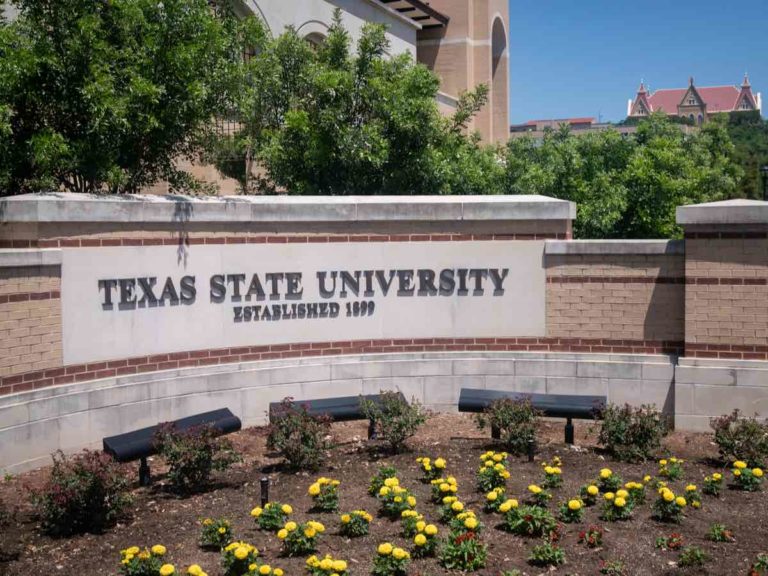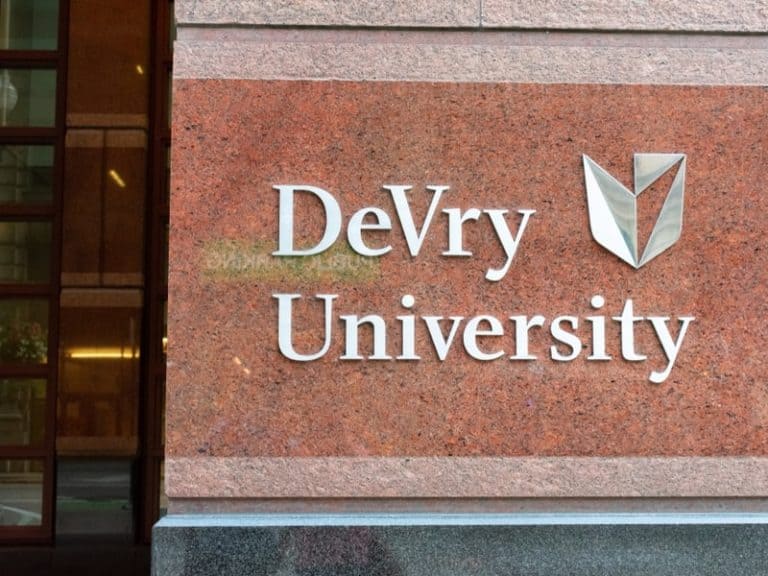Military Academies
Military academies, or also sometimes referred to as service academies, are educational institutions designed to prepare students for service in the US Armed Forces. Unlike traditional colleges and universities, they integrate into their academic curriculum military training and discipline that includes the following:
- Physical fitness training
- Leadership skills
- Development of a strong sense of personal responsibility
- Adherence to a strict code of conduct
There are different types of military academies. Some are designed to prepare students to become servicemembers in the various branches of the US Army, while others prepare high schoolers and vocational students for service academies as well as different careers while instilling military training and discipline in them.
Military academies, in particular public ones, also differ based on where they get funding.
Planning on having a career in the military someday or you just want to earn a college degree with a military-style program? Continue reading this article about military schools you might want to consider applying to.
In this post, we will talk about the following types of military academies in the US:
- Federal service academies
- State military colleges
- Military boarding schools
- Military prep schools
- Military junior colleges

Federal Service Academies
Simply put, federal service academies are academic institutions that are directly funded by the federal government — students who attend them get full scholarships that cover tuition and fees, room and board and other college-related expenses. Federal service academies offer four-year programs that combine military training and academic studies.
Federal service academies are some of the hardest institutions of higher learning in the US to get into, with many of them having low acceptance rates just like some of the country’s most selective traditional colleges and universities.
Let’s now talk about the different federal service academies in the nation, arranged by selectivity level.
United States Naval Academy
Located in Annapolis, Maryland and founded in 1845, the United States Naval Academy (USNA) gets young men and women ready to become professional officers of competence, character and compassion in the US Navy and Marine Corps.
Students are considered midshipmen on active duty in the US Navy.
Undergraduate students attend the federal service academy for four years, just like undergraduates at other institutions of higher education, and graduate with bachelor’s degrees. Graduates are also commissioned as ensigns in the Navy or second lieutenants in the Marine Corps, serving as such for at least five years.
The acceptance rate of USNA is 11% only and admitted freshmen students have SAT scores ranging from 1200 to 1440 and ACT scores ranging from 25 to 32. The average high school GPA of those who get in is 3.7.
Getting your hands on a nomination is an important part of the application process to the selective institution.
The nomination should be from an official source such as a US representative representing the student’s congressional district, a US senator representing one’s state or the vice president of the US.
USNA encourages applicants to obtain nominations from various sources.
It’s also a must for them to pass the Candidate Fitness Assessment (CFA), which is designed to evaluate one’s strength, speed, agility, endurance and coordination. Such consists of the following tests:
- A one-mile run
- A shuttle run
- A kneeling basketball throw
- Abdominal crunches
- Push-ups
- Pull-ups (or a flexed-arm hang for women if pull-ups cannot be accomplished)
Given that the USNA program is demanding, applicants must also pass a medical examination, which is administered by the Department of Defense Medical Examination Review Board (DoDMERB).
United States Military Academy
Also often simply referred to as West Point, the United States Military Academy at West Point is a public institution located in West Point, New York. It was founded in 1943, originally as a port.
Simply put, West Point is designed to educate, train and inspire the Corps of Cadets (what its undergraduate students are referred to) so that each graduate becomes a commissioned leader of character and ready for a career of professional excellence and service to the Nation as an officer in the US Army.
Pivotal to the four-year experience of West Point’s undergraduates is a moral-ethical development that supports the federal service academy’s motto — “Duty, Honor, Country” — as well as meets the ideals of the seven Army values:
- Loyalty
- Duty
- Respect
- Selfless service
- Honor
- Integrity
- Personal courage
Every year, West Point receives more than 12,000 applications.
Only around 12% of all applicants, however, get into the public institution each time. The average high school GPA of those who get in is 3.9, while their SAT and ACT scores range from 1220 to 1450 and 27 to 33, respectively.
Those who are interested in applying to West Point are required to submit a nomination.
A nomination that West Point requires comes in two forms.
First is the congressional nomination, which can come from US senators and US representatives as well as the president or vice president of the nation. Second is the service-connected nomination, which can come from a US Army member or ROTC unit or a child of a deceased or disabled veteran or a Medal of Honor awardee.
Applicants must also submit one high school counselor recommendation letter as well as three different teacher recommendation letters coming from their English, math and science teachers.
Of course, they must pass the CFA exam and undergo the DoDMERB medical exam.
United States Air Force Academy
Established in 1959, the United States Air Force Academy (USAFA) is the youngest of all federal service academies.
USAFA educates its cadets (or undergraduate students) for service in the officer corps of the US Air Force as well as the US Space Force, which was founded in 2019 and serves as the space service branch of the US Armed Forces.
Ranked #7 in National Liberal Arts Colleges 2024 and #2 in Top Public Schools 2024 by US News, USAFA has a massive 18,500-acre campus located in El Paso County, Colorado, and is currently home to 4,085 undergraduates. The public institution takes pride in the fact that it has 32 majors and a student-to-faculty ratio of 8:1.
Speaking of majors, every semester, cadets participate in the so-called Majors’ Night where they can speak with department representatives and consult with academic advisors to help explore their options.
Around 70% of its attendees are males, and about 34% of its population consists of minorities.
USAFA has an acceptance rate of 13% only. Its most recent admits have an average high school GPA of 3.8 and their SAT scores range from 1310 to 1480 and their ACT scores range from 28 to 33.
To get admitted, applicants must meet various requirements, including having a nomination.
Determining which nomination one is eligible for is a must, and they are as follows:
- Congressional (from both US senator and US representative)
- Vice presidential (from the US vice president)
- Military-affiliated (from the kids of deceased or disabled veterans, Medal of Honor recipients, etc.)
- US territory (from an appropriate representative of a US territory)
- International (from the country)
Other important admission requirements include a satisfactory completion of the CFA as well as meeting medical and weight standards for a commission in the US Air Force.
United States Coast Guard Academy
Located in New London, Connecticut, the United States Coast Guard Academy (USCGA) has a 103-acre campus and a total undergraduate enrollment of 1,037.
The public institution educates future Coast Guard officers and offers the following majors:
- Civil engineering
- Cyber systems
- Electrical engineering
- Government
- Management
- Marine and environmental sciences
- Mechanical engineering
- Naval architecture and marine engineering
- Operations research
One of the nicest things about USCGA is that, because of an open exchange agreement, its cadets have the opportunity to take elective courses at Connecticut College, which is ranked #46 in National Liberal Arts Colleges 2024 by US News and has highly ranked computer science and psychology programs, located just across the street from the campus.
USCGA has an acceptance rate of 15%. The most recently admitted undergraduate cadets have an average high school GPA of 3.8. Their standardized test scores, meanwhile, range from 1160 to 1365 (SAT) and 26 to 31 (ACT).
Unlike other federal service academies, applicants to USCGA need not submit nominations from US senators or representatives. However, they must submit the following instead:
- Math instructor letter of recommendation
- English instructor letter of recommendation
- High school counselor letter of recommendation
- Commanding Officer recommendation (if currently serving in the military)
Also a requirement for applicants is to complete the so-called Physical Fitness Examination (PFE), which can be conducted by a coach, physical education instructor, personal trainer or active-duty military member.
The PFE consists of the following tests:
- Cadence push-ups
- Two-minute sit-ups
- A 1.5-mile run
It’s also a must for them to file the results of their DoDMERB medical exam.
United States Merchant Marine Academy
Also sometimes simply referred to as Kings Point because of where it’s located in New York, the United States Merchant Marine Academy (USMMA) prepares its undergraduate students, who are referred to as midshipmen, to serve the national security, marine transportation, and economic needs of the US.
Its graduates become licensed US Merchant Marine Officers and commissioned officers in the US Armed Forces.
Among the country’s different federal service academies, USMMA is the easiest to get into — it has an acceptance rate of 29%, and the SAT and ACT score ranges of admitted students are 1150 to 1330 and 25 to 28, respectively.
Students can choose from the following majors:
- Marine engineering systems
- Marine engineering and shipyard management
- Marine engineering
- Marine transportation
- Maritime logistics and security
Despite having less than 1,000 students on its 82-acre campus, USMMA has a bustling social and athletic life — there are more than 40 registered clubs and organizations and 27 varsity teams, which have shown success at levels ranging anywhere from NCAA Division III National Champions to Conference Champions.
Like most other federal service academies, applicants must get nominated by a US senator or representative. However, they may also be nominated by a US representative even if they are from another district although they must be from the same state.
It’s also important, as expected, that they pass the CFA and a medical exam.
State Military Colleges
As the name suggests, state military colleges receive funding from state governments instead of the federal government such as in the case of federal service academies. Like federal service academies, state military colleges educate their students while at the same time providing them with military training.
Other than preparing undergraduates for a military career, state military colleges also offer various majors that help their attendees gear up for careers in the government and various areas in the private sector, too.
The following are the state military colleges in the US:
| Institution | Location |
| North Georgia College and State University | Dahlonega, Georgia |
| Norwich University | Northfield, Vermont |
| South Carolina State University | Orangeburg, South Carolina |
| Texas A&M University | College Park, Texas |
| The Citadel, The Military College of South Carolina | Charleston, South Carolina |
| University of North Georgia | Dahlonega, Georgia |
| University of Wisconsin – Stevens Point | Stevens Point, Wisconsin |
| Virginia Military Institute | Lexington, Virginia |
Military Boarding Schools
Military boarding schools are like traditional private boarding schools in which students live within the premises while getting a formal education. However, the only difference is that students at military boarding schools also follow a structured daily routine that emphasizes leadership, self-sufficiency and discipline, among others, as well as physical training and drills.
The military-style program and rigorous academic curriculum at military boarding schools help prepare students for eligibility for a military career as well as success in just about any profession of their liking.
Let’s take a look at some military boarding schools in the country:
| Institution | Location |
| Admiral Farragut Academy | St. Petersburg, Florida |
| Army and Navy Academy | Carlsbad, California |
| Benedictine Military School | Savannah, Georgia |
| Camden Military Academy | Camden, South Carolina |
| Fishburne Military School | Waynesboro, Virginia |
| Fork Union Military Academy | Fork Union, Virginia |
| Hargrave Military Academy | Chatham, Virginia |
| Lyman Ward Military Academy | Camp Hill, Alabama |
| Marine Military Academy | Harlingen, Texas |
| Marymount California University | Rancho Palos Verdes, California |
| Massanutten Military Academy | Woodstock, Virginia |
| Missouri Military Academy | Mexico, Missouri |
| New Mexico Military Institute | Roswell, New Mexico |
| New York Military Academy | Cornwall-on-Hudson, New York |
| Oakland Military Institute | Oakland, California |
| Randolph-Macon Academy | Front Royal, Virginia |
| Riverside Military Academy | Gainesville, Georgia |
| St. Catherine’s Academy | Anaheim, California |
| St. John’s Northwestern Military Academy | Delafield, Wisconsin |
| Valley Forge Military Academy & College | Wayne, Pennsylvania |
Military Prep Schools
Students who are considering a career in the military may consider attending military prep schools, where they can obtain the academic preparation as well as the instillation of various skills and values necessary for becoming a part of the US Armed Forces. In most instances, students at military prep schools are required to participate in Reserve Officers’ Training Corps (ROTC).
Military prep schools have a rigorous academic curriculum necessary for admission to selective federal service academies as well as other institutions of higher education that can help them pave the way for successful careers elsewhere.
Here are some of the US military prep schools:
| Institution | Location |
| Air Force Academy High School | Chicago, Illinois |
| California Military Institute | Perris, California |
| Chicago Military Academy | Bronzeville, Chicago |
| Georgia Military College | Milledgeville, Georgia |
| Kenosha Military Academy | Kenosha, Wisconsin |
| Marine Academy of Science and Technology | Monmouth County, New Jersey |
| Marie G. Davis Military and Global Leadership Academy | Charlotte, North Carolina |
| Rickover Naval Academy | Chicago, Illinois |
| Sarasota Military Academy | Sarasota, Florida |
| Southern Preparatory Academy | Camp Hill, Alabama |
Military Junior Colleges
Technically speaking, junior colleges are community colleges although they are used less and less these days. It goes without saying that military junior colleges allow students to earn two-year degree programs, except that they are not the kinds typically offered at community colleges as they have a military training component.
After earning their associate degree, graduates of military junior colleges may either apply for jobs related to the programs they completed successfully or seek eligibility for federal or state military academies.
The following are the different military junior colleges in the country:
| Institution | Location |
| Georgia Military College | Milledgeville, Georgia |
| Marion Military Institute | Marion, Alabama |
| New Mexico Military Institute | Roswell, New Mexico |
| Valley Forge Military Academy | Wayne, Pennsylvania |
Disclaimer: The views and opinions expressed in this article are those of the authors and do not necessarily represent those of the College Reality Check.




